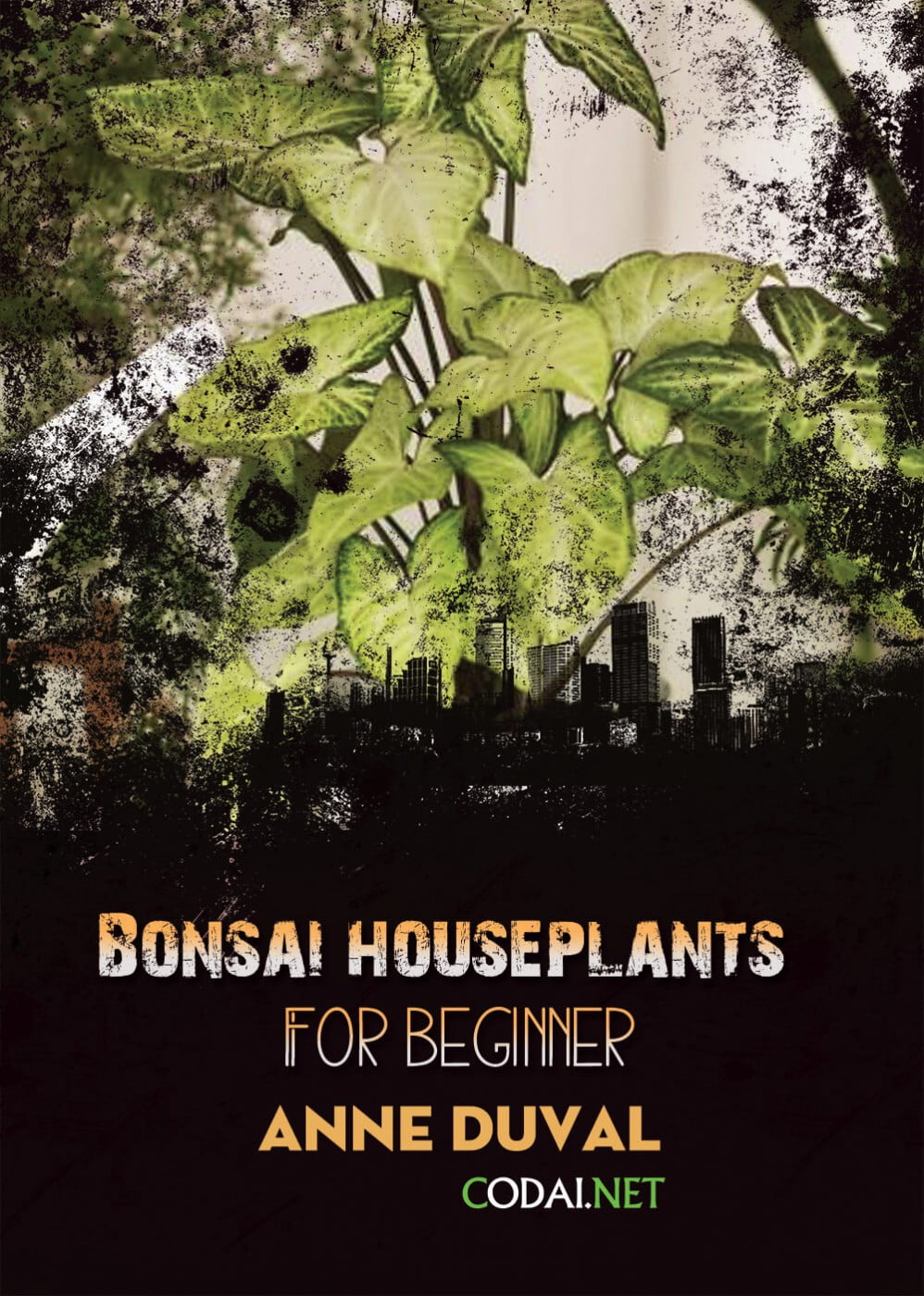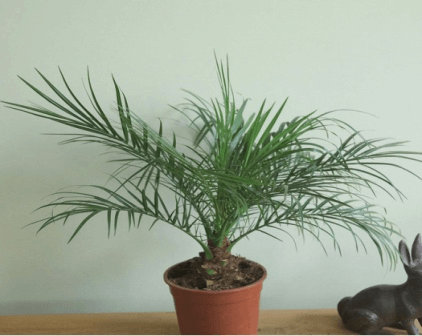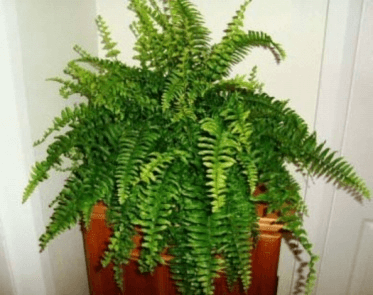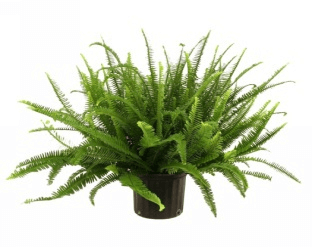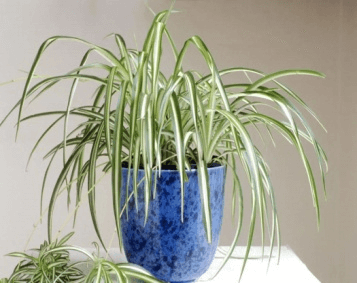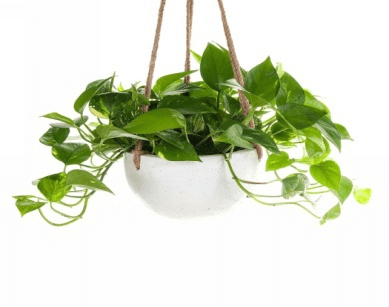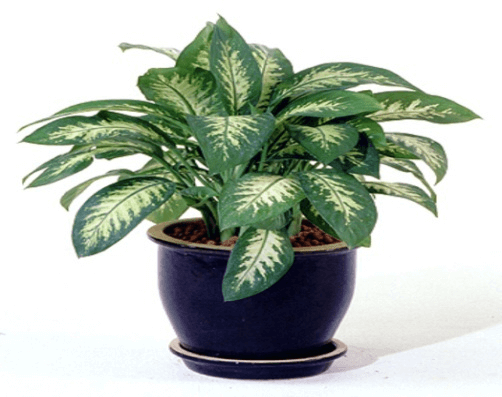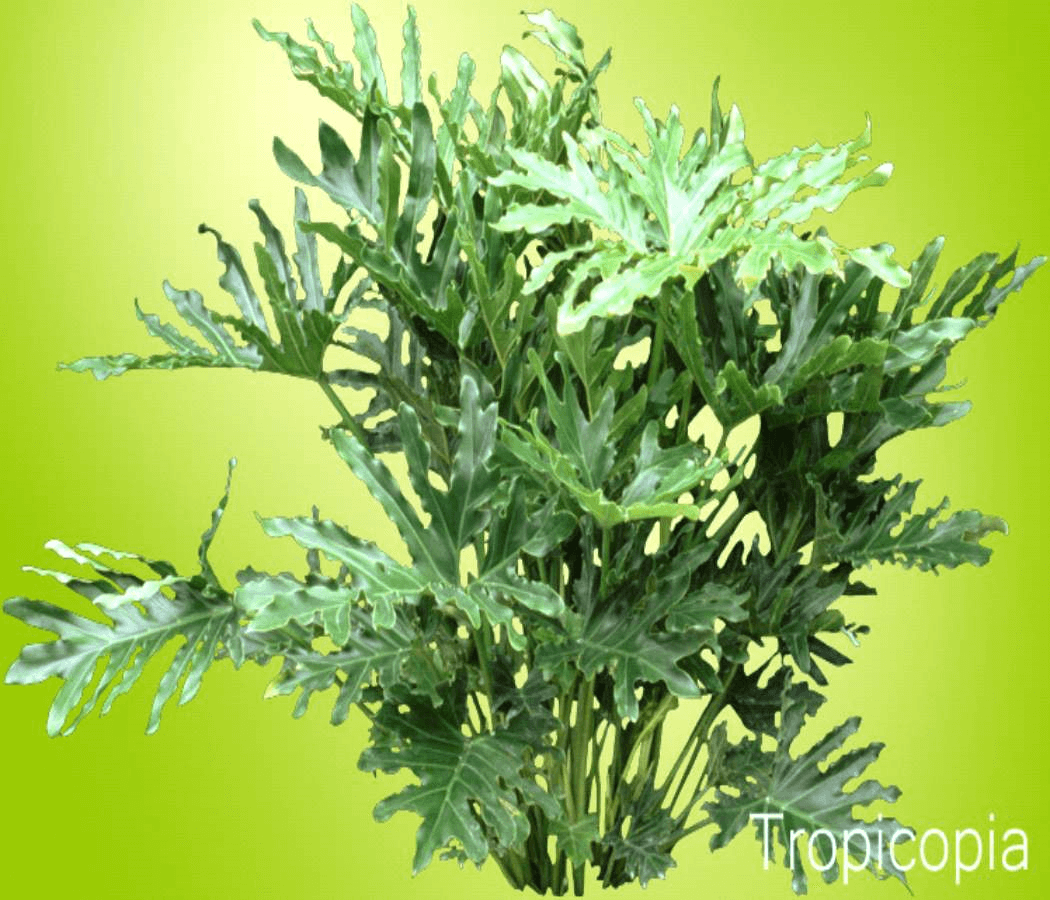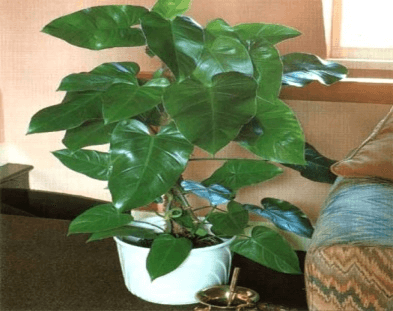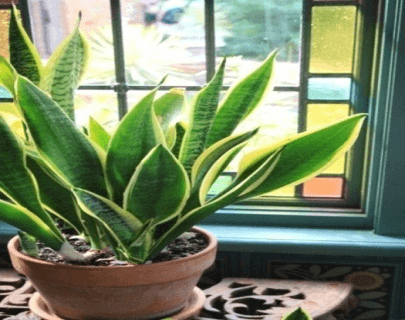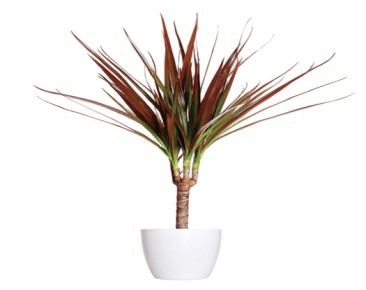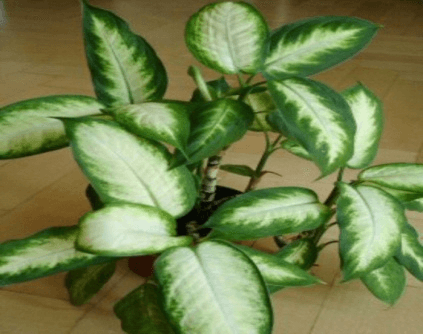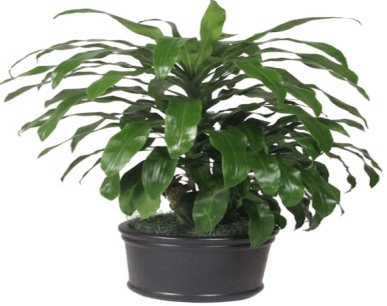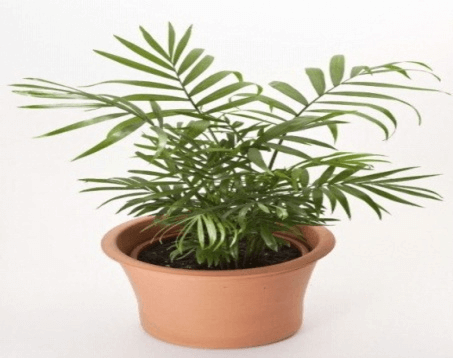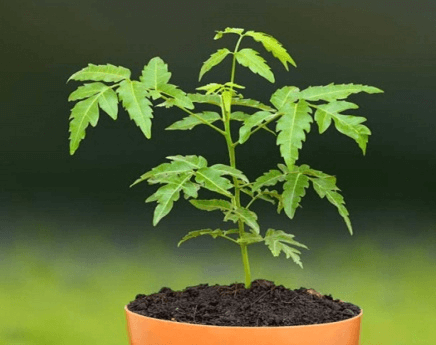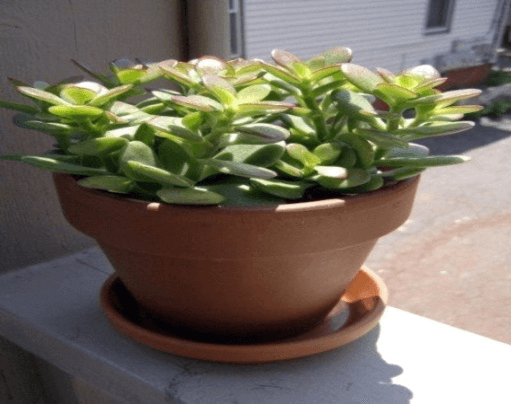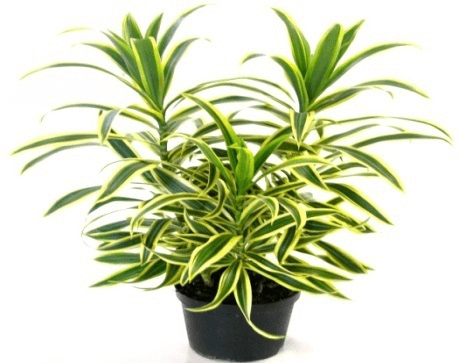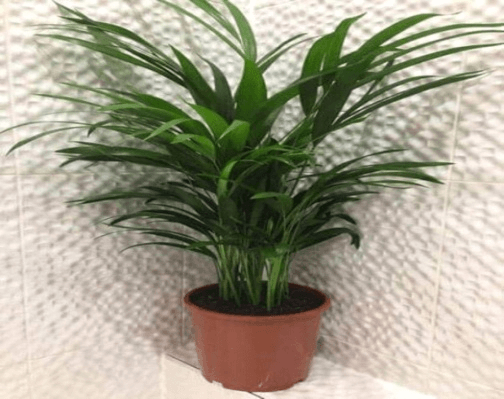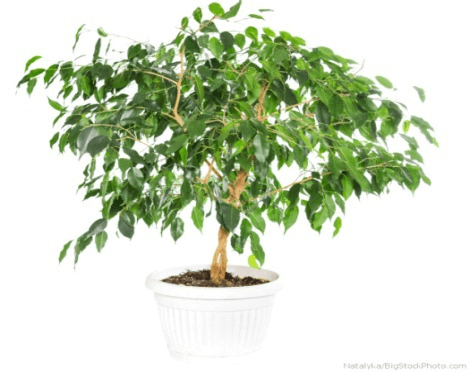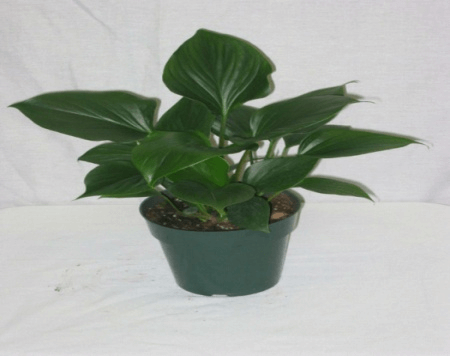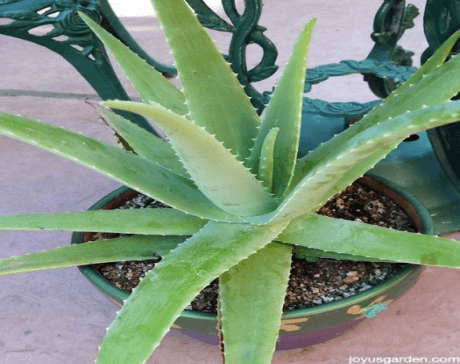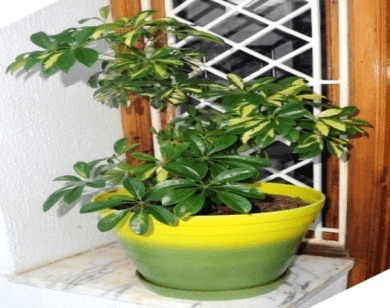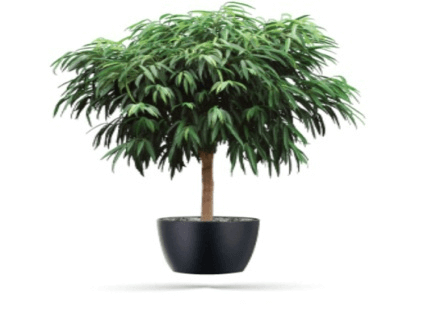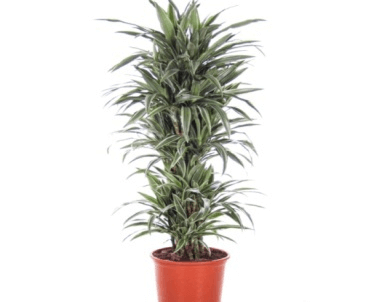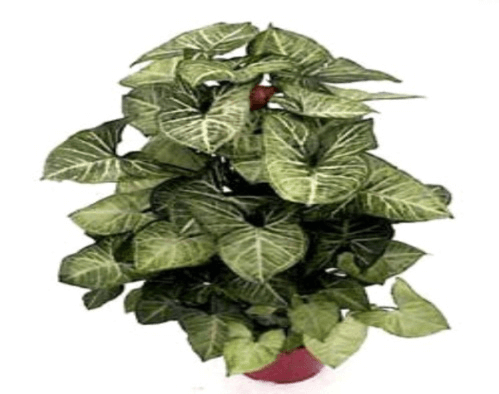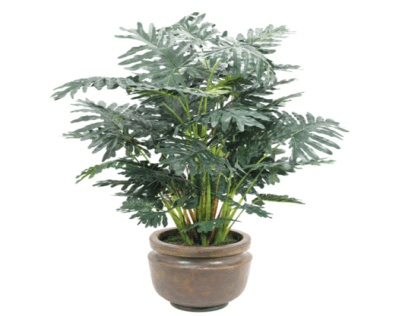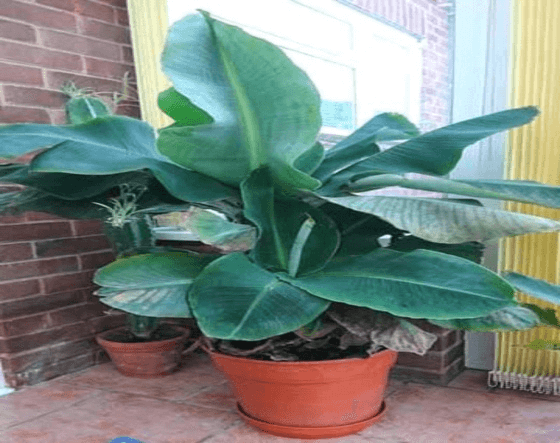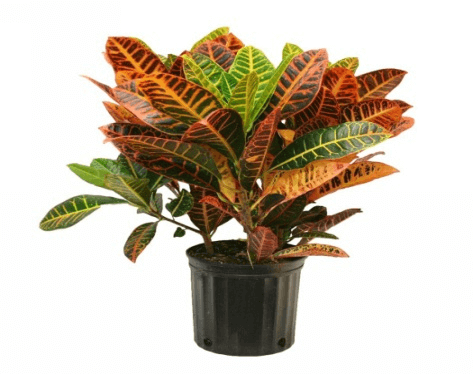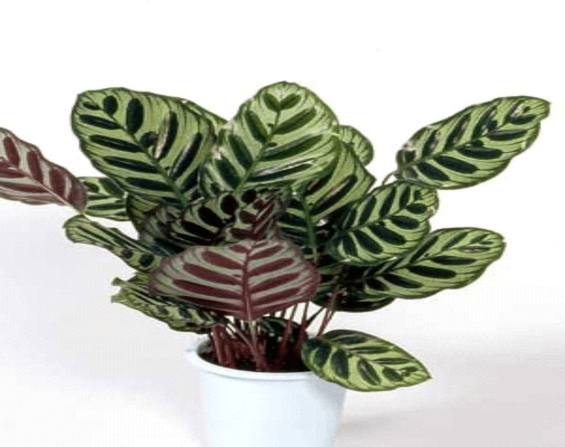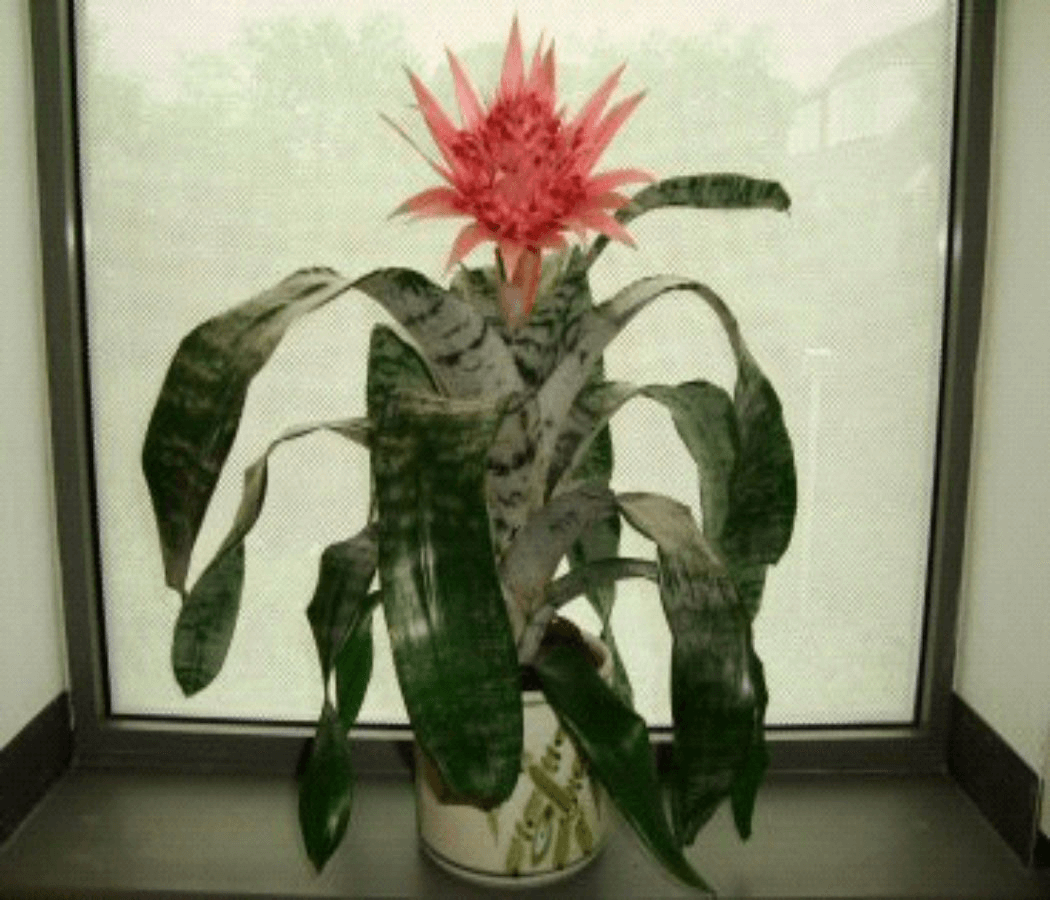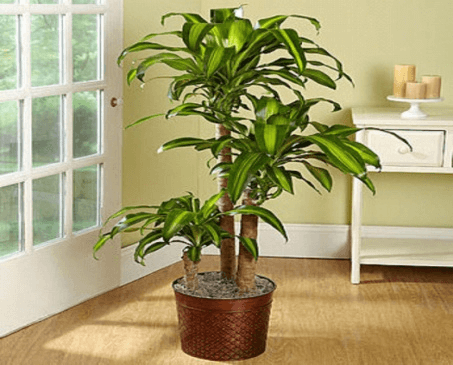[Ebook Việt Hoá] BONSAI and HOUSEPLANTS for Beginners - Anne Duval (Bonsai và Cây Cảnh trong nhà Houseplants cho người mới bắt đầu)
[Ebook Việt Hoá] BONSAI and HOUSEPLANTS for Beginners – Anne Duval – Easiest to Grow Houseplants (Cách dễ nhất để trồng cây cảnh trong nhà)
- Nguồn: [Ebook Việt Hoá] BONSAI and HOUSEPLANTS for Beginners – Anne Duval (Bonsai và Cây Cảnh trong nhà Houseplants cho người mới bắt đầu)
- Biên tập: Dũng Cá Xinh (Tháng 08/2021)
- Dịch: Vui Nguyễn
English
Pigmy Date Palm (Phoenix robeline)
Boston Fern (Nephrolepis exaltata)
Kimberley Queen Fern (Nephrolepis obliterate)
Spider Plant (Chlorophytum comosum)
Devil’s Ivy (Epipremnum aureum)
Chinese Evergreen (Aglaonema modestum)
Selloum philodendron (Philodendron bipinnatifidum)
Elephant Ear Plant (Philodendron domesticum)
Snake Plant (Sansevieria trifasciata)
Red Edged Dracaena (Dracaena marginata)
Dumb Canes (Dieffenbachia)
Janet Craig (Dracaena deremensis)
Parlor Palm (Chamaedorea elegans)
Swiss Cheese Plant (Monstera deliciosa)
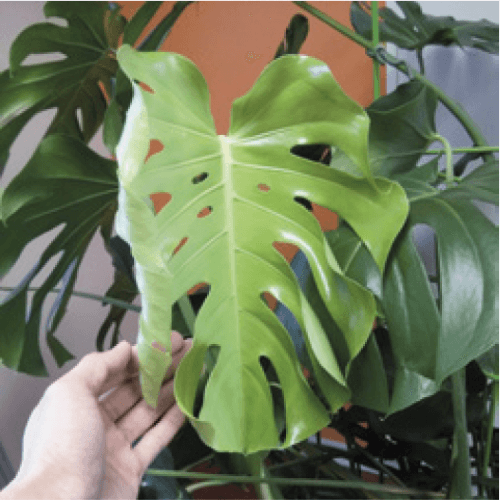
Jade Plant (Crassula ovata)
Song of India (Pleomele reflexa)
Additional Plants for Your Home
Areca Palm (Chrysalidocarpus lutescens)
Weeping Fig (Ficus benjamina)
King of Hearts (Homalomena wallisii)
Aloe vera
Schefflera (Brassaia actinophylla)
Ficus “Alii” (Ficus maclellandii)
Dracaena “Warneckei” (Dracaena dermensis)
Syngonium (Syngonium podophyllum)
Lacy Tree Philodendron (Philodendron selloum)
Norfolk Island Pine (Araucaria heterophylla)
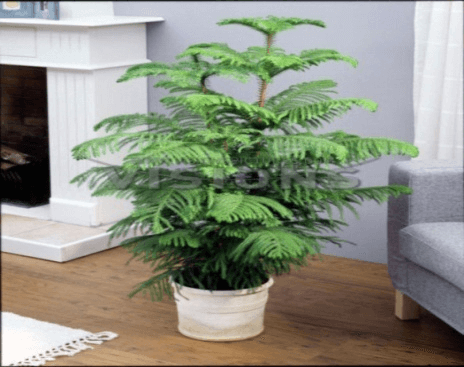
Dwarf Banana (Musa cavendishii)
Croton (Codiaeum variegatum pictum)
Peacock Plant (Calthea makoyana)
Urn Plant (Aechmea fasciata)
Mass Cane (Dracaena massangeana)
Ginger (Zingiber officinale)
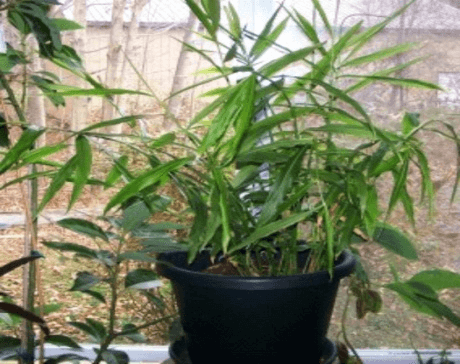
Tiếng Việt
Trồng và tạo không khí trong lành cho ngôi nhà hoặc văn phòng của bạn không phải là điều quá khó khăn. Nhiều cây trồng trong nhà không yêu cầu nhiều công chăm sóc, ánh sáng hoặc nước. Nếu bạn không có khiếu trồng trọt thì những loại cây trong bài viết này sẽ phù hợp với bạn..
Tất cả những loại cây trong bài viết này đều là những cây khỏe khoắn, dễ chăm sóc và có thể chịu được sự thiếu quan tâm. Hầu hết những loại cây này chỉ cần tưới nước tối đa một lần một tuần, nhiều cây còn cần ít nước hơn. Hầu hết những loại cây này phát triển tốt trong điều kiện ánh sáng yếu hoặc trong bóng râm, do đó chúng thích hợp làm cây nội thất, đặc biệt là trong các tòa nhà văn phòng không có nhiều cửa sổ để lấy ánh sáng tự nhiên.
Mỗi loại cây sẽ đi kèm với hình ảnh để bạn tham khảo, các chất độc trong không khí mà nó loại bỏ, hướng dẫn bảo dưỡng, độc tính đối với trẻ em và vật nuôi. Thông tin này phải đủ để bạn quyết định loại cây nào tốt nhất cho ngôi nhà hoặc văn phòng, dựa vào điều kiện cá nhân của bạn.
Các nghiên cứu của NASA về ô nhiễm nhà ở thực hiện vào năm 1989 khuyến cáo mọi người nên trồng 15 đến 18 cây trồng trong các thùng chứa có đường kính từ 6-8 inch (15-20 cm) để làm sạch không khí trong một ngôi nhà có diện tích trung bình 1.800 foot vuông (khoảng 167 mét vuông). Tức là khoảng một cây trên 100 feet vuông (9 mét vuông) diện tích sàn. Điều này sẽ áp dụng cho hầu hết các loại cây được mô tả dưới đây.
Cây Cau Nga Mi (Pygmy Date Palm, tên khoa học Phoenix roebelenii)
Cau nga mi có nguồn gốc từ các khu vực nhiệt đới của châu Á. Tuy nhiên, bạn có thể dễ dàng tìm thấy chúng trong các vườn ươm trên toàn cầu. Cau Nga mi loại bỏ một số chất độc trong không khí bao gồm formaldehyde, xylene và toluene. Cau Nga mi có thể sống trong điều kiện ánh sáng mặt trời yếu và trong điều kiện khô hạn vừa phải. Nghĩa là loại cây này thích hợp trồng trong nhà và không cần phải đặt cạnh cửa sổ. Thông thường, cau Nga mi sẽ luôn đủ ẩm nếu bạn tưới nước mỗi tuần một lần.
Loại cây này không độc hại đối với trẻ em và vật nuôi. Đôi khi cần cắt tỉa để kiểm soát tốt tốc độ phát triển của cây, đặc biệt là trong những môi trường nhỏ hẹp. Cau Nga mi được sử dụng nhiều trong trang trí nội thất và trồng thương mại do hình dạng duyên dáng và chiều cao từ 6-10 feet (1,8-3 m). Khi trồng trong đất có độ pH trên 7, cây có thể bị thiếu kali hoặc magiê.
Cây Dương Xỉ Boston (Boston Fern, tên khoa học Nephrolepis exaltata)
Dương xỉ Boston là loại cây trồng trong nhà phổ biến và phát triển tốt dưới ánh sáng gián tiếp. Nó có nguồn gốc từ vùng khí hậu nhiệt đới của Nam Mỹ, Florida và Châu Phi, loài cây này cần tưới nước thường xuyên. Tuy nhiên, nó có khả năng chịu hạn, vì vậy quên tưới nước trong vài ngày sẽ không gây hại cho nó.
Phạm vi nhiệt độ trong nhà tốt nhất là từ 68-78 độ F (20-25 độ C)
Cây cần độ ẩm cao để phát triển mạnh, vì vậy nếu độ ẩm dưới 80%, bạn nên tưới nước thường xuyên cho cây. Nếu bạn muốn tránh phun sương, hãy ghép Dương xỉ Boston với một loại cây có thể hút nước từ không khí, chẳng hạn như cây Cọ cảnh (Areca Palm). Dương xỉ Boston làm sạch formaldehyde, xylene và toluene trong không khí và có thể được trồng trong chậu hoặc giỏ treo. Loại cây này không độc hại đối với trẻ em và vật nuôi.
Cây Dương Xỉ Nữ Hoàng Kimberly (Kimberly Queen Fern, tên khoa học Nephrolepis obliterata)
Dương xỉ nữ hoàng Kimberly không nổi tiếng bằng Dương xỉ Boston, nhưng rất giống ở nhiều khía cạnh, bao gồm cả ngoại hình. Nó nguồn gốc từ Úc, loại cây này dễ dàng tìm thấy ở các trung tâm làm vườn và vườn ươm. Nó không nhạy cảm với độ ẩm như Dương xỉ Boston, vì vậy bạn không phải thường xuyên phun sương. Để vài cm đất trên cùng khô ráo trước khi tưới lại. Lá của Dương xỉ nữ hoàng Kimberly chuyển sang màu xanh lục nhạt khi cây cần nước. Các lá lược giòn, có màu nâu ở giữa cây cho thấy quá nhiều nước. Dương xỉ nữ hoàng Kimberly phát triển tốt ở nhiệt độ từ 60-85 độ F (15-30 độ C). Nếu nhiệt độ xuống dưới 60 độ F (15 độ C), cây sẽ không chết mà ngừng phát triển.
Giống như Dương xỉ Boston, Dương xỉ nữ hoàng Kimberly lọc formaldehyde, xylene và toluene trong không khí. Loại cây này không độc hại đối với trẻ em và vật nuôi.
Cỏ Lan Chi (Spider Plant, tên khoa học Chlorophytum comosum)
Cỏ Lan chi là một trong những loại cây trong nhà rất dễ trồng nhằm tạo không khí trong lành. Nó sống tốt ở nhiều loại khí hậu và có khả năng chịu hạn. Cây phát triển tốt nhất dưới ánh sáng mặt trời gián tiếp. Cỏ Lan chi có tác dụng lọc khí formaldehyde, xylene, toluene, không độc hại đối với trẻ em và vật nuôi.
Chăm sóc cỏ Lan chi rất dễ. Loài cây kiên cường này chống chịu tốt, do đó chúng trở thành ứng cử viên xuất sắc cho những người mới làm vườn hoặc những người không có khiếu trồng cây. Nếu chúng sống ở nơi có đất thoát nước tốt và ánh sáng gián tiếp, chúng sẽ sinh sôi nảy nở. Tưới nước đầy đủ nhưng không để cây bị úng vì điều này có thể dẫn đến thối rễ. Trên thực tế, cỏ Lan chi thích đất khô giữa các lần tưới nước. Khi chăm sóc cây, bạn cũng cần lưu ý rằng chúng thích nhiệt độ mát mẻ, khoảng 55 đến 65 độ F (13-18 độ C).
Nếu bạn nhận thấy lá cây chuyển sang màu nâu, bạn không cần phải lo lắng. Đầu lá có màu nâu là hiện tượng khá bình thường và sẽ không gây hại cho cây.
Cây Trầu Bà ( Devil’s Ivy, tên khoa học Epipremnum aureum)
Trầu bà là loại cây rất khó tiêu diệt. Do vậy nó trở thành cây trồng trong nhà tuyệt vời cho những người không chăm sóc cây cối tốt. Loại cây này không đòi hỏi chăm sóc và chú ý nhiều, đơn giản là thỉnh thoảng tưới nước cho nó. Cây Trầu Bà làm sạch benzen, formaldehyde, xylene và toluene trong không khí. Tất cả các phần của cây đều rất độc nếu ăn phải, vì vậy hãy để cây tránh xa tầm tay của trẻ em và vật nuôi. Một số người cũng dị ứng với nhựa cây, do vậy khi cắt tỉa cây bạn nên đeo găng tay .
Cây Trầu bà trong nhà thường có chiều dài từ 6-8 feet (1,8-2,5 m) nếu không được cắt tỉa. Lá của cây có hình trái tim màu vàng điểm thêm chút xanh, kích thước của lá tùy thuộc vào nơi trồng cây. Trong nhà, lá có thể đạt chiều dài khoảng 4 inch (10cm). Nếu bạn trồng cây trong chậu, hỗn hợp đất có than bùn sẽ giúp thoát nước nhanh và đủ để cây phát triển.
Đặt cây ở khu vực nhận được ánh sáng mặt trời đã lọc hoặc ánh sáng nhân tạo để cây phát triển tối ưu. Bạn nên tưới đẫm nước cho cây, đến khi nước chảy ra từ các lỗ thoát nước ở dưới cùng. Tưới cây khoảng một tuần một lần hoặc khi vài cm đất trên cùng khô ráo. Vào mùa đông, hãy giảm số lần tưới nước xuống còn khoảng 2 tuần một lần.
Cây Thường Xanh Trung Quốc ( Chinese Evergreen, tên khoa học Aglaonema Modestum)
Cây Thường xanh Trung Quốc là một loại cây trồng trong nhà rất dễ chăm sóc. Nó phát triển tốt trong điều kiện ánh sáng yếu và không cần tưới nước thường xuyên. Đây là loại cây lý tưởng với những người không có nhiều thời gian chăm sóc cây trồng. Cây Thường xanh Trung Quốc lọc khí benzen và formaldehyde. Loại cây này có độc tính cao đối với trẻ em và vật nuôi. Khi chạm vào nhựa của cây, phản ứng da liễu sẽ xảy ra.
Cây Thường xanh Trung Quốc phát triển mạnh trong điều kiện ánh sáng trung bình đến thấp, hoặc ánh sáng mặt trời gián tiếp. Những cây này thích nhiệt độ từ 60 độ F trở lên (khoảng 16 độ C.) với nhiệt độ trong nhà trung bình trong khoảng 70-72 độ F (21-22 độ C).
Cây Thường xanh Trung Quốc thích môi trường đất ẩm đều và độ ẩm cao. Nó không chịu được không khí khô, vì vậy hãy tưới nước cho cây cho đến khi đất ẩm vừa phải. Để đất khô một chút giữa các lần tưới nước vì tưới nhiều hoặc quá nhiều sẽ dẫn đến các vấn đề về nấm như thối thân hoặc thối rễ.
Cây Trầu Bà Thanh Xuân (Selloum philodendron, tên khoa học Philodendron bipinnatifidum)
Cây Philodendron Selloum hoặc cây Trầu bà thanh xuân có nguồn gốc từ Nam Mỹ, nhưng chúng cũng phát triển trên các bờ biển phía Đông và vùng Vịnh của Hoa Kỳ. Trong nhà, cây Trầu bà thanh xuân rất dễ chăm sóc, chiếm nhiều không gian, thường lan rộng 5ft hoặc hơn với 2ft-3ft lá. Lá cây có màu xanh đậm, bóng, lớn và chia thùy sâu. Khi trưởng thành cây Trầu bà có thân dài, nhưng thường bị những chiếc lá rủ xuống che khuất.
Những cây này có độc và cần tránh xa vật nuôi và trẻ em.
Cây Trầu bà là một loài thực vật nhiệt đới có lá hình trái tim đến từ Nam Mỹ. Trong môi trường sống tự nhiên, nó hấp thụ nhiều ánh sáng mặt trời trực tiếp, vì vậy nó thích nghi tốt với môi trường bóng râm. Cây này không cần tưới nước thường xuyên, nhưng thỉnh thoảng bạn cần cắt tỉa lại khi cây phát triển. Cây này loại bỏ formaldehyde trong nhà.
Cây Môn Cảnh (Elephant Ear, tên khoa học Philodendron domesticum)
Cây Môn cảnh là một loại cây khác thuộc họ philodendron, một họ thực vật thân thiện, có thể chịu được sự thiếu chăm sóc, chỉ cần tưới nước khi đất khô, và không cần để dưới ánh nắng trực tiếp.
Loại cây này loại bỏ formaldehyde trong không khí và rất độc đối với vật nuôi và trẻ em. Cây không phát triển tốt trong giỏ treo, vì vậy nếu bạn có vật nuôi nhỏ hoặc trẻ nhỏ, hãy để cây trên giá cao hoặc chọn một loại cây khác để mang lại không khí trong lành.
Trồng cây Môn cảnh trên đất mùn, ẩm, có hàm lượng chất hữu cơ cao. Chúng rất dễ bảo dưỡng khi bạn đã quen.
Cây Lưỡi Hổ ( Snake Plant, tên khoa học Sansevieria trifasciata)
Cây Lưỡi hổ là loại cây trồng trong nhà cực kỳ dễ chăm sóc. Nó chịu được ánh sáng yếu rất tốt và có thể đặt ở bất cứ đâu trong nhà.
Cây Lưỡi hổ cũng không cần tưới nước thường xuyên và thích tưới ít nước do đất sũng nước sẽ làm thối rễ cây. Cây Lưỡi hổ là một trong những loại cây lọc khí rất tốt. Nó trao đổi carbon dioxide để lấy oxy bằng cách sử dụng quá trình chuyển hóa axit crassulacean, quá trình này không phổ biến ở nhiều loài thực vật. Nó cũng làm sạch benzen, formaldehyde, trichloroethylene, xylen và toluen trong không khí. Loại cây này gây độc cho trẻ em và vật nuôi.
Cây Lưỡi hổ phát triển tốt khi trồng trong hỗn hợp đất thoát nước, vì chúng rất dễ bị thối. Để đất khô giữa các lần tưới nước và đặc biệt lưu ý không tưới quá nhiều nước vào mùa đông. Cố gắng tránh làm ướt lá cây khi bạn tưới nước.
Cây Phất Dụ Mảnh ( Red-Edged Dracaena, tên khoa học Dracaena marginata)
Cây Phất dụ mảnh là loại cây trồng trong nhà tuyệt vời vì nó không cần nhiều công chăm sóc. Loại cây này phát triển tốt nhất trong điều kiện ánh sáng mặt trời đã lọc hoặc ánh sáng gián tiếp và không cần tưới nước thường xuyên.
Các cạnh màu đỏ của cây Phất dụ mảnh mang đến màu sắc nổi bật, loại cây này có thể phát triển cao tới tận trần nhà. Cây Phất dụ loại bỏ xylene, trichloroethylene và formaldehyde, những chất này được đưa vào trong nhà thông qua sơn mài, vecni và xăng.
Sự thay đổi nhiệt độ có thể khiến lá cây chuyển vàng hoặc thậm chí chết. Nhiệt độ hoàn hảo cho cây là từ 60-70 độ F (16-21 độ C) vào ban ngày và 50-60 độ F (10-16 độ C) vào ban đêm. Lưu ý không đặt cây Phất dụ mảnh trong chậu gần lò sưởi hoặc cửa sổ đón gió lạnh.
Có rất nhiều loại Phất dụ. Loại cây này đặc biệt là do nó có viền màu đỏ tím trên những chiếc lá xanh giống như dải băng. Mặc dù cây phát triển chậm, nhưng nó có thể cao tới 15 feet (4,5 m), do đó bạn nên đặt cây trong một căn phòng có trần cao và ánh sáng mặt trời vừa phải. Loại cây này gây độc cho trẻ em và vật nuôi.
Cây Mía Câm (Dumb Cane, thuộc chi Dieffenbachia)
Cây Mía cẩm là loại cây thích hợp trồng trong nhà, chỉ cần chăm sóc vừa phải. Đất trồng cây cần phải giữ ẩm cũng như có lượng ánh sáng mặt trời đã lọc vừa phải, chẳng hạn như từ cửa sổ gần đó. Loại cây này không lọc nhiều độc tố, chỉ loại bỏ xylene và toluene. Tuy nhiên, nó giúp tạo ra oxy sạch cho ngôi nhà của bạn.
Loại cây này cực kỳ độc hại đối với trẻ em và vật nuôi. Nhựa của cây có vị chát, khi uống vào có thể làm tê cổ họng và dây thanh quản, khiến nạn nhân bị câm đến hai tuần. Nhựa cây rất dễ gây kích ứng da, bất kỳ chỗ nào tiếp xúc với nhựa cây cũng cần phải rửa thật sạch.
Những gia đình không có trẻ em hoặc vật nuôi có thể xem xét trồng loại cây này.
Cây Thiết Mộc Lan (Janet Craig, tên khoa học Dracaena deremensis)
Thiết mộc lan là loại cây trồng tuyệt vời, yêu cầu ít công chăm sóc, không cần tưới nhiều nước và có thể phát triển mạnh dưới bất kỳ loại ánh sáng nào.
Đa phần cây sẽ được trồng trong các chậu 10 inch (25 cm) với 3 cây mỗi chậu, có chiều cao từ 24-32 inch (61-81 cm). Với chậu 14 inch (36 cm) thì sẽ trồng 4 cây mỗi chậu với chiều cao từ 30-42 inch (76-107 cm).
Thiết mộc lan không ưa nhiệt, đặc biệt trong những tháng mùa hè cây thường có xu hướng đổi màu.
Nhiệt độ tối đa là 90 độ F (32 độ C). Khi nhiệt độ tăng trên 95 độ F (35 độ C), các vấn đề về màu lá và khía lá có thể xảy ra.
Loài cây này lọc benzen, formaldehyde và trichloroethylene ra khỏi không khí. Nó có độc tính cao đối với trẻ em và vật nuôi.
Cây Cau Tiểu Trâm (Parlour Palm, tên khoa học Chamaedorea elegans)
Cau Tiểu trâm là một lựa chọn phù hợp để làm cây trồng trong nhà nếu bạn thích những giống cây không phát triển quá lớn. Cau Tiểu trâm sẽ chỉ đạt chiều cao tối đa khoảng 3 feet (0.9m). Nó là loại cây trồng phổ biến vì cực kỳ dễ chăm sóc.
Đây là loại cây trồng trong nhà lý tưởng vì nó phát triển rất chậm và phát triển mạnh trong không gian thiếu ánh sáng, chật chội. Tưới ít nước cho cây vì tưới ít nước sẽ tốt hơn là tưới nhiều nước. Để đất khô giữa các lần tưới, và tưới ít nước vào mùa đông.
Nếu bạn đang trồng cau Tiểu trâm trong nhà, hãy trồng một vài cây trong cùng một chậu. Chúng mọc thẳng lên trong cùng một cụm trông sẽ hấp dẫn hơn. Cau Tiểu trâm có hệ thống rễ tương đối yếu và không ngại đông đúc, vì vậy không nên trồng nhiều cây hơn mức cần thiết.
Chăm sóc cây cau Tiểu trâm. Nhiệt độ trung bình từ 65°F (18°C) trở lên là ổn và không dưới 50°F (10°C) vào ban đêm.
Cây phát triển tốt nhất trong những căn phòng có ánh sáng yếu, cách xa cửa sổ và không tưới nước thường xuyên. Nó cũng được ưa chuộng hơn nhiều loại cây trồng trong nhà khác vì nó không độc hại đối với chó, mèo và trẻ em. Giống như các loại cây thuộc họ cọ khác, cau Tiểu trâm sẽ làm sạch benzen, formaldehyde và carbon monoxide trong không khí.
Cây Trầu Bà Lá Xẻ (Swiss Cheese Plant, tên khoa học Monstera deliciosa)
Trầu bà lá xẻ là một loại cây trồng trong nhà với những chiếc lá to và rậm rạp. Khi trưởng thành, nó có thể cao từ 2-3 feet (0,6-0,9 m) trong điều kiện sinh trưởng tốt. Đây là loại cây thích hợp trồng trong nhà do cần ít bảo dưỡng.
Trầu bà lá xẻ thích nhiều ánh nắng nhưng cũng thích nghi được với bóng râm. Nó cũng thích đất ẩm, thoát nước tốt. Loại cây này phát triển tốt nhất trong điều kiện ấm áp và độ ẩm cao.
Trầu bà lá xẻ cần nhiều không gian: Hãy đặt nó ở vị trí thoáng đãng trong phòng khách, thay vì một góc chật hẹp hoặc trên bệ cửa sổ.
Trầu bà lá xẻ có thể phát triển cùng các loại cây nhiệt đới khác, và cũng sẽ được hưởng lợi từ không gian trong nhà. Có thể thêm một giàn hoặc cột nhỏ gần đó.
Nếu bạn không thể kiểm soát được hết số lượng cây, hoặc nếu cây của bạn đang phát triển tràn lan – hãy cắt tỉa một hoặc hai chiếc lá và dựng chúng thẳng đứng trong một chiếc bình thủy tinh trong suốt.
Cây cần nhiệt độ ít nhất là 65 độ F (18 độ C) hoặc ấm hơn. Trầu bà lá xẻ cũng cần đất ẩm vừa phải và độ ẩm cao.
Trầu bà lá xẻ không phải là một phần của nghiên cứu ban đầu do NASA thực hiện. Tuy nhiên, nó là loại cây trồng trong nhà cho chất lượng không khí tốt vì nó sẽ loại bỏ carbon dioxide và thêm độ ẩm cho không khí. Loại cây này gây độc cho trẻ em và vật nuôi.

Cây Neem (Neen Plant, tên khoa học Azadirachta indica)
Cây Neem là một sự bổ sung tuyệt vời cho ngôi nhà của bạn. Loại cây này rất dễ chăm sóc, cần có nắng sáng và tưới nước hàng tuần để tạo độ ẩm cho đất. Cây Neem được nhiều người biết đến với dược tính của nó, do đó bạn nên thận trọng khi sử dụng vì một số tác dụng phụ tiềm ẩn, chủ yếu đối với phụ nữ. Trẻ em hoặc vật nuôi không nên ăn loại cây này. Cây Neem là một trong những loại cây hấp thụ carbon dioxide tốt nhất và giải phóng oxy vào không khí, dù nó chưa được nghiên cứu về sự ảnh hưởng đối với các chất gây ô nhiễm không khí khác.
Cây Neem ban đầu sẽ phát triển chậm, nhưng sau khi được một năm tuổi, nó sẽ phát triển nhanh, miễn là bạn chăm sóc nó đủ tốt.
Tưới nước quá nhiều là rủi ro lớn nhất đối với cây Neem. Chúng thực sự không chịu được nước và có thể gặp các vấn đề về nấm và thối rễ. Điều quan trọng nhất đối với cây Neem là sự ấm áp và nhiều ánh sáng mặt trời. Có đủ 2 yếu tố trên, nó sẽ phát triển nhanh hơn.
Môi trường sống tự nhiên của cây Neem là ở những nơi nóng và khô. Cây có thể chịu được nhiệt độ lên đến 122 độ F (55 độ C), nhưng chịu được giá lạnh; nhiệt độ dưới 40 độ F (4 độ C) sẽ làm lá rụng và có thể làm chết cây. Phạm vi nhiệt độ lý tưởng của cây Neem là khoảng 50-98 độ F (10-37 độ C).
Cây Phỉ Thúy (Jade Plant, tên khoa học Crassula ovata)
Cây Phỉ thúy có tán lá xanh, tươi tốt, rất thích hợp để làm loãng cacbonic trong không khí và giải phóng oxy. Là loại cây cực kỳ dễ chăm sóc. Mặc dù cây cần nhiều ánh sáng mặt trời gián tiếp, nhưng không cần tưới nước thường xuyên. Cây thích đất khô, vì thế chỉ tưới khi đất mặt khô, một hoặc hai tuần một lần. Loại cây này không độc hại đối với trẻ em và vật nuôi.
Cây Phỉ thúy phát triển tốt ở nhiệt độ phòng (18 đến 24°C) nhưng thích nhiệt độ mát vào ban đêm và vào mùa đông (13°C). Giữ đất ẩm nhưng không quá ướt trong quá trình cây sinh trưởng mạnh mẽ vào mùa xuân và mùa hè. Để đất khô giữa các lần tưới vào mùa đông. Tránh để nước bắn lên lá khi tưới.
Huyết Dụ Ấn Độ (Song of India, tên khoa học Pleomele reflexa)
Cây Huyết dụ Ấn Độ, hay cây Pleomele, là loại cây trồng trong nhà rất đẹp và dễ trồng. Với lá lớn và tán lá rậm rạp, đây là lựa chọn hoàn hảo để tạo ra oxy và loại bỏ carbon dioxide trong nhà. Nếu bạn không có nhiều kiến thức về làm vườn cây là loại cây phù hợp với bạn. Loại cây này cần ánh sáng từ thấp đến trung bình và chỉ tưới khoảng một lần một tuần. Đôi khi nó cần cắt tỉa các lá thấp để thúc đẩy tán lá rậm rạp phía trên. Loại cây này hơi độc đối với vật nuôi.
Giống như tất cả Dracaenas, Reflexa Variegata thích sống ở nơi khô ráo. Luôn luôn để 50% đất trên cùng khô trước khi tưới. Độ ẩm cao là điều kiện lý tưởng để loài cây này sinh sôi. Nhiệt độ cơ bản trong nhà từ 65-85 độ F (18-29 độ C) là lý tưởng cho Dracaena Reflexa Variegata.
Cây cảnh bổ sung cho ngôi nhà của bạn
Các loại cây trong phần này là một số loại cây kỳ lạ và đắt tiền. Bạn có thể trồng chúng nhằm cung cấp không khí trong lành cho ngôi nhà. Nhiều loại trong số này rất dễ chăm sóc nhưng sẽ rất tốn kém hoặc phát triển rất to. Hãy cân nhắc kỹ lưỡng trước khi tậu một trong những loại cây này cho ngôi nhà của bạn. Chúng có thể là những khởi đầu tuyệt vời và rất đáng để đầu tư nếu bạn quan tâm đến chúng.
Một trong số này là những cây có kích thước lớn hoặc chúng là những cây lạ khó tìm. Một số cây lại khó chăm sóc và cần được hướng dẫn thêm từ vườn ươm để cây phát triển tốt. Một số loại cây không phổ biến khi làm cây trồng trong nhà nhưng có thể được trồng trong nhà một cách cẩn thận.
Một lần nữa, mỗi loại cây sẽ đi kèm với hình ảnh minh họa, cách nó làm sạch không khí, xếp hạng độc tính và hướng dẫn chăm sóc. Thông tin này được cung cấp để giúp bạn quyết định xem bạn có muốn trồng những cây này trong nhà hay không. Bạn có thể tham khảo ý kiến của vườn ươm mà bạn mua chúng để biết thêm thông tin về các loại cây kỳ lạ hơn.
Cọ Areca (Areca Palm, tên khoa học Chrysalidocarpus lutescens)
Cọ Areca có nguồn gốc từ vùng khí hậu nhiệt đới và cận nhiệt đới nhưng thường có mặt ở hầu hết các vườn ươm và trung tâm làm vườn. Cây trưởng thành có giá thành cao, vì vậy tốt nhất bạn nên mua cây khi nó còn nhỏ và trồng cho đến khi cây trưởng thành. Cọ Areca không cần ánh sáng mặt trời và nên đặt cây gần cửa sổ hướng Nam hoặc Tây. Loại cây này cần được tưới đủ nước và thường xuyên để giữ cho đất ẩm. Loại cây này phát triển khoảng 6-10 inch (15-25cm) mỗi năm cho đến khi nó đạt chiều cao từ 6-7 feet (1.8-2.1m) khi trưởng thành.
Bạn có thể cắt tỉa lá để cây nhỏ hơn phù hợp làm cây trồng trong nhà. Cọ Areca cần được thay chậu hai năm một lần và có tuổi thọ khoảng mười năm. Các nghiên cứu đã chỉ ra rằng cọ Areca làm sạch không khí có formaldehyde, xylene và toluene. Nó cũng bổ sung độ ẩm cho không khí, giải phóng khoảng một lít nước sau mỗi 24 giờ. Loại cây này không độc hại đối với trẻ em và vật nuôi.
Cây Si (Weeping Ficus, tên khoa học Ficus benjamina)
Cây Si là một loại cây thông thường chứ không phải là một loại cây trồng trong nhà truyền thống. Nó phát triển tốt khi làm cây trồng trong nhà vì nó cần rất ít công chăm sóc. Chỉ cần tưới nước cho cây khi đất khô, loại cây này phát triển tốt trong bóng râm. Cây Si cần được cắt tỉa hoặc thay chậu khi nó phát triển đến kích thước đáng kể. Cây Si sẽ làm sạch không khí có formaldehyde, xylene và toluene. Loại cây này gây độc cho vật nuôi.
Cây Thiên Niên Kiện (King of Heart, tên khoa học Homalomena wallisii)
Thiên niên kiện là loại cây phổ biến, nhưng khó chăm sóc. Nó thích khí hậu ôn hòa, không lạnh nhưng cũng không quá 75 độ F (24 độ C). Nó cũng cần được tưới nước thường xuyên, nhưng không quá sũng. Loài cây này rất nhạy cảm và dễ dàng được chăm sóc bởi những người có tài chăm sóc cây cối. Thiên niên kiện sẽ lọc không khí có xylen và toluen. Loại cây này độc với trẻ em và vật nuôi.
Nha Đam (Aloe Vera)
Nha đam là loại cây trồng rất hữu ích. Mặc dù còn nhiều tranh cãi về việc sử dụng Aloe Vera trong y học, nhưng nó vẫn được sử dụng để làm dịu vết bỏng và vết cắt nhỏ. Lô hội cũng lọc benzen và formaldehyde trong không khí, đồng thời tạo ra oxy. Nó phát triển tốt nhất ở nơi có nhiều ánh sáng và được trồng trong chậu đất cát. Nha đam không cần nhiều nước mà cần chậu cây có khả năng thoát nước tốt. Loại cây này gây độc cho trẻ em và vật nuôi.
Cây Ngũ Gia Bì (Schefflera, tên khoa học Brassaia actinophylla)
Ngũ gia bì, hay còn được gọi là cây ô, là loại cây loại bỏ độc tố tốt và tạo ra oxy. Ngũ gia bì loại bỏ benzen, formaldehyde, xylen và toluen ra khỏi không khí. Nó cần ánh sáng mặt trời trung bình và gián tiếp, chỉ nên tưới cây khi đất khô. Loại cây này gây độc cho trẻ em và vật nuôi.
Ficus “Alii” ( tên khoa học Ficus maclellandii)
Loại cây này đã được lai tạo để trồng trong nhà. Ficus Alii là loại cây loại bỏ tốt các chất độc trong không khí bao gồm benzen, formaldehyde và trichloroethylene. Nó cũng tạo ra nhiều oxy và hạn chế carbon dioxide. Loại cây này rất dễ chăm sóc và phát triển tốt trong điều kiện thiếu ánh sáng và được tưới nước thường xuyên. Loại cây này gây độc cho trẻ em và vật nuôi.
Phất Dụ Warneckii (Dracaena Warneckii, tên khoa học Dracaena deremensis)
Phất dụ Warneckii là loại cây trồng không tốn nhiều công sức. Nó xuất hiện nhiều trong các không gian văn phòng vì nó không cần tưới nước thường xuyên và phát triển tốt trong điều kiện ánh sáng yếu hoặc ánh sáng nhân tạo. Phất dụ Warneckii lọc benzen trong không khí và tạo ra oxy. Loại cây này gây độc cho trẻ em và vật nuôi.
Cây Tróc Bạc (Syngonium, tên khoa học Syngonium podophyllum)
Cây Tróc bạc rất thích hợp trồng trong nhà nếu bạn chăm sóc nó đúng cách. Nó cần đất ẩm, do đó phải tưới nước thường xuyên. Nó cũng yêu cầu độ ẩm cao hoặc phun sương hàng ngày với nước ấm. Tróc bạc phát triển tốt trong điều kiện ánh sáng yếu hoặc bóng râm, vì vậy nó thích hợp trồng trong văn phòng và nội thất gia đình. Nó cũng sẽ lọc benzen, fomanđehit, xylen và toluen trong không khí. Loại cây này gây độc cho trẻ em và vật nuôi.
Cây Trầu Bà Thanh Xuân (Lacy Tree Philodendron, tên khoa học Philodendron selloum)
Cây Trầu bà thanh xuân không phổ biến như các loại cây trồng trong nhà khác, nhưng nó làm sạch formaldehyde và carbon dioxide trong không khí tốt. Nó dễ chăm sóc, cần ít ánh sáng và nước. Tuy nhiên, cây cần có chỗ để phát triển, vì nó có thể khá lớn và rậm rạp. Cây này rất độc đối với trẻ em và vật nuôi.
Cây Bách Tán (Norfolk Island Pine, tên khoa học Araucaria heterophylla)
Cây Bách tán không thực sự là một cây thông. Nó được biết đến nhiều nhất với cái tên Charlie Brown Christmas. Tuy nhiên, loại cây này rất thích hợp trồng trong nhà. Nó dễ chăm sóc do không cần tưới nước thường xuyên và có thể phát triển tốt trong điều kiện ánh sáng yếu. Bách tán làm sạch formaldehyde, xylene và toluene trong không khí. Loại cây này gây độc cho trẻ em và vật nuôi.

Chuối Lùn (Dwarf Banana, tên khoa học Musa cavendish)
Chuối lùn là lựa chọn tốt cho ngôi nhà của bạn nếu bạn có thể chăm sóc nó đúng cách. Cây có thể cao khoảng 6 feet (1.8m) và là một trong số ít những cây không độc hại đối với vật nuôi hoặc trẻ em. Nó cần nhiều nước và ánh sáng mặt trời để phát triển. Chuối lùn sẽ loại bỏ formaldehyde trong không khí và tạo ra nhiều oxy.
Cây Cô Tòng (tên khoa học Codiaeum variegatum pictureum)
Loại cây này không dành cho những người yếu tim. Nó sẽ lọc không khí trong nhà một cách đáng kể, giúp loại bỏ formaldehyde, xylene và toluene. Tuy nhiên, nó vô cùng khó chăm sóc. Bạn không thể đặt cây này dưới ánh nắng trực tiếp, nếu không lá sẽ bị cháy và rụng. Mặt khác, bạn không thể để nó trong phòng thiếu ánh sáng, nếu không nó sẽ bị héo. Tưới nước cũng có thể là một vấn đề, tưới quá nhiều hoặc quá ít sẽ làm cây chết nhanh chóng. Tuy nhiên, nếu bạn có thể tìm được lịch chiếu sáng và tưới nước phù hợp, loại cây này sẽ là thanh lọc ngôi nhà của bạn. Loại cây này gây độc cho trẻ em và vật nuôi.
Cây Đuôi Công (Peacock Plant, tên khoa học Calathea Makoyana)
Cây Đuôi Công là một lựa chọn tuyệt vời nếu bạn thích những cây trồng lạ mắt. Các hoa văn trên lá của cây rất tinh tế. Tuy nhiên, nó cần được chăm sóc cẩn thận. Bạn cần tránh những khu vực râm mát, nhưng cũng không nên tiếp xúc trực tiếp với ánh nắng mặt trời. Cây chỉ cần một lượng nước nhỏ mỗi ngày và nó cũng cần độ ẩm. Nếu nhà bạn có độ ẩm thấp, bạn cần phải tưới nước hàng ngày cho cây. Công dụng của cây là lọc xylen và toluen trong không khí. Loại cây này không độc hại đối với trẻ em và vật nuôi.
Dứa Gai Hồng (Urn Plant, tên khoa học Aechmea fasciata)
Dứa gai hồng là loại cây trông rất kỳ lạ, nó khá được ưa chuộng cũng như là một máy lọc không khí tốt. Cây này cần nhiều ánh sáng mặt trời gián tiếp. Bạn sẽ phải rất cẩn thận khi tưới nước cho cây trong giai đoạn ra hoa. Bạn phải đảm bảo không tưới quá nhiều nước, nhưng cũng không được để đất quá khô. Dứa gai hồng lọc xylen, toluen và amoniac trong không khí. Loại cây này không độc hại đối với trẻ em và vật nuôi.
Cây Phất lộc (Mass Cane, tên khoa học Dracaena massangeana)
Cây Phất lộc là loại cây khác phù hợp trồng trong nhà. Dù Phất lộc có thể khá lớn, nhưng nó phát triển rất chậm và sẽ phù hợp với không gian nhỏ trong một thời gian khá dài. Không giống như nhiều loại cây trong nhà khác, cây Phất lộc rất dễ chăm sóc. Nó chỉ cần ánh sáng vừa phải và tưới nước một hoặc hai tuần một lần. Cây Phất lộc hay còn gọi là cây ngô đồng có tác dụng lọc trichloroethylene và formaldehyde trong không khí. Tuy không độc đối với con người, nhưng nó nguy hiểm đối với vật nuôi như chó và mèo.
Gừng (Ginger, tên khoa học Zingiber officinale)
Gừng không phải là loại cây được trồng phổ biến trong nhà, nhưng với một số cách chăm sóc, nó có thể trở thành cây trồng trong nhà. Gừng có rất nhiều công dụng, củ gừng là một loại gia vị phổ biến. Gừng cũng có nhiều lợi ích đối với sức khỏe, bao gồm cả việc giảm viêm. Là một loại cây trồng trong nhà, gừng sẽ giúp loại bỏ khí cacbonic ra khỏi ngôi nhà của bạn. Ngoài ra, gừng còn bổ sung độ ẩm cho ngôi nhà. Loại cây này không độc hại đối với trẻ em và vật nuôi.

